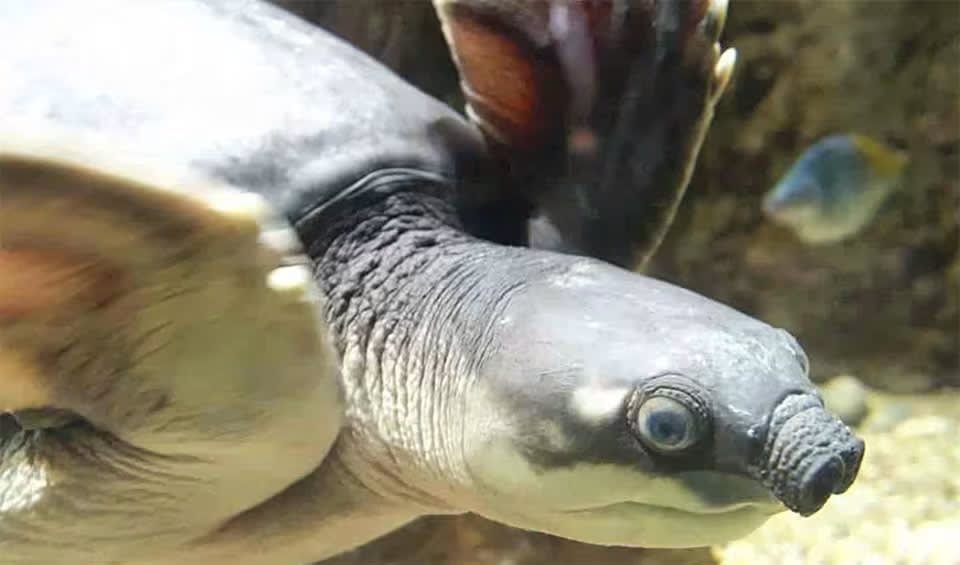Carettochelyidae – Pig-nosed turtle
Look at their fleshy snout and big nostrils, and you can see where they got their name!
An enigmatic and ancient lineage of turtles that garners attention due to its distinctive features and unique ecological niche. These turtles are endemic to the freshwater rivers and lagoons of Australia and Papua New Guinea, where they navigate a world increasingly impacted by human activities.
Known for their peculiar snouts that resemble a pig’s nose, pig-nosed turtles stand out among freshwater species. This nasal adaptation is not merely for show; it serves as a snorkel, allowing these turtles to breathe while submerged, with only their snouts breaking the surface. The nose is highly sensitive and enhances its ability to navigate and forage in turbid waters, detecting the scent and presence of potential food sources.
Their front limbs have evolved into flippers, akin to those of sea turtles, a feature that sets them apart from most freshwater turtles. These powerful, paddle-like limbs provide exceptional swimming capabilities. The pig-nosed turtle’s rear limbs are webbed, aiding propulsion and maneuverability. This anatomical combination makes them adept swimmers, capable of rapid and agile movements in the water, which is crucial for avoiding predators such as crocodiles.
When young, these turtles exhibit a somewhat translucent underbelly, but as they mature, their bodies become more solid gray. Their skin is uniquely textured and leathery, covering both the carapace (upper shell) and the plastron (lower shell), contributing to their common misidentification as soft-shelled turtles.
Genera in this family
Look at their fleshy snout and big nostrils, and you can see where they got their name!

